In a world increasingly concerned with sustainability, native plant landscaping offers a powerful way to create beautiful, low-maintenance, and eco-friendly gardens. By integrating local flora into your landscape design, you not only celebrate your region’s natural beauty but also help protect the environment. In this comprehensive guide, we explore the benefits of native plant landscaping, how to start your own native garden, design ideas, maintenance tips, and more.
What Is Native Plant Landscaping?
Native plant landscaping is the practice of designing gardens and green spaces using plants that are indigenous to a specific geographic area. These plants have evolved naturally in their local ecosystems over thousands of years and are well-adapted to the soil, climate, and native wildlife.
Why It Matters
Native plants offer a range of ecological benefits:
- They require less water and fertilizer.
- They are more resistant to pests and diseases.
- They support pollinators, birds, and other wildlife.
- They reduce the need for chemical pesticides and herbicides.
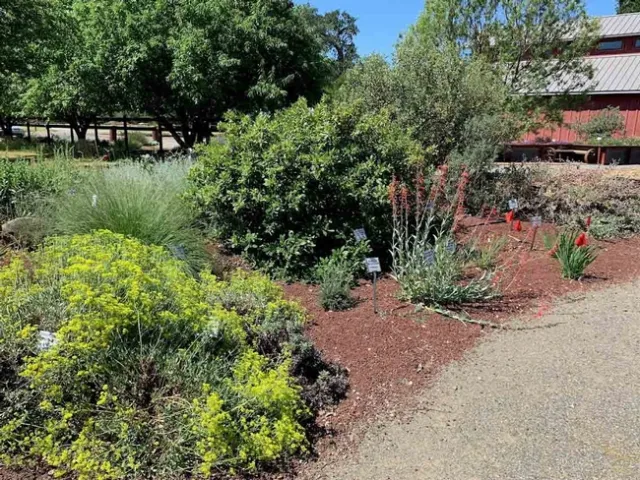
The Environmental Benefits of Native Plant Landscaping
One of the key selling points of native plant landscaping is its environmental impact. Unlike traditional ornamental gardening, which often relies on exotic species and high-maintenance practices, native gardens are more sustainable in every sense.
1. Water Conservation
Native plants are adapted to local rainfall patterns, often requiring little to no irrigation once established. This makes them perfect for drought-prone regions and water-conscious homeowners.
2. Soil Health
Because they evolved in local soils, native plants stabilize and improve the structure of the soil without requiring frequent fertilization or soil amendments.
3. Wildlife Habitat
Native landscapes provide food and shelter for native bees, butterflies, hummingbirds, and other pollinators. This contributes to biodiversity and the health of local ecosystems.
4. Lower Carbon Footprint
By reducing the need for watering, mowing, and chemical inputs, native plant landscaping helps reduce greenhouse gas emissions associated with garden maintenance.
How to Start Your Own Native Plant Landscape
Creating a native garden may sound complex, but it’s entirely doable—even for beginners. Follow these steps to build a beautiful and eco-conscious outdoor space.
Step 1: Research Your Region
The first step in native plant landscaping is understanding what plants are native to your area. Contact local nurseries, check online databases (like PlantNative.org), or reach out to local botanical gardens for advice.
Step 2: Analyze Your Site
Consider:
- Sunlight exposure: Full sun, partial shade, or full shade.
- Soil type: Sandy, loamy, clay, or rocky.
- Moisture levels: Is your site naturally dry or moist?
These factors will help you select the right plants for each part of your landscape.
Step 3: Select Your Plants
Choose a mix of:
- Groundcovers (e.g., wild ginger, creeping phlox)
- Perennials (e.g., coneflowers, goldenrod)
- Shrubs (e.g., serviceberry, elderberry)
- Trees (e.g., red maple, oak species)
This layered approach mimics natural ecosystems and provides year-round visual interest.
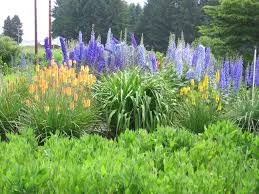
Step 4: Prepare the Soil
Remove invasive species and weeds. Some native plants thrive in poor soil, but you may need to loosen compacted areas to promote root growth.
Step 5: Plant and Mulch
Plant during the appropriate season—often fall or early spring—and use mulch (preferably organic) to suppress weeds and retain moisture.
Step 6: Water During Establishment
Although native plants are drought-tolerant, they still need regular watering during their first year as they establish deep roots.
Design Ideas for Native Plant Landscaping
Native gardens don’t have to look “wild” or unkempt. You can create visually stunning, orderly landscapes with thoughtful design principles.
1. Cottage Garden Style
Use colorful native wildflowers like bee balm, black-eyed Susan, and columbine to mimic a charming cottage aesthetic.
2. Prairie-Style Garden
Ideal for flat, sunny areas. Use tall grasses (like little bluestem) mixed with prairie flowers (like blazing star and butterfly milkweed).
3. Woodland Garden
For shaded areas, incorporate ferns, woodland phlox, and native bleeding hearts.
4. Rain Gardens
Design low-lying areas with moisture-loving natives like swamp milkweed, joe-pye weed, and cardinal flower to manage stormwater runoff naturally.
Common Native Plants by Region
Here’s a brief list of popular native plants in different areas of North America.
Northeast
- New England Aster
- Red Columbine
- Sugar Maple
- Wild Lupine
Southeast
- Coreopsis
- Southern Magnolia
- Purple Coneflower
- Coral Honeysuckle
Midwest
- Little Bluestem
- Butterfly Weed
- Ohio Buckeye
- Prairie Dropseed
Southwest
- Desert Marigold
- Ocotillo
- Palo Verde
- Penstemon
Pacific Northwest
- Oregon Grape
- Red Flowering Currant
- Douglas Fir
- Salal
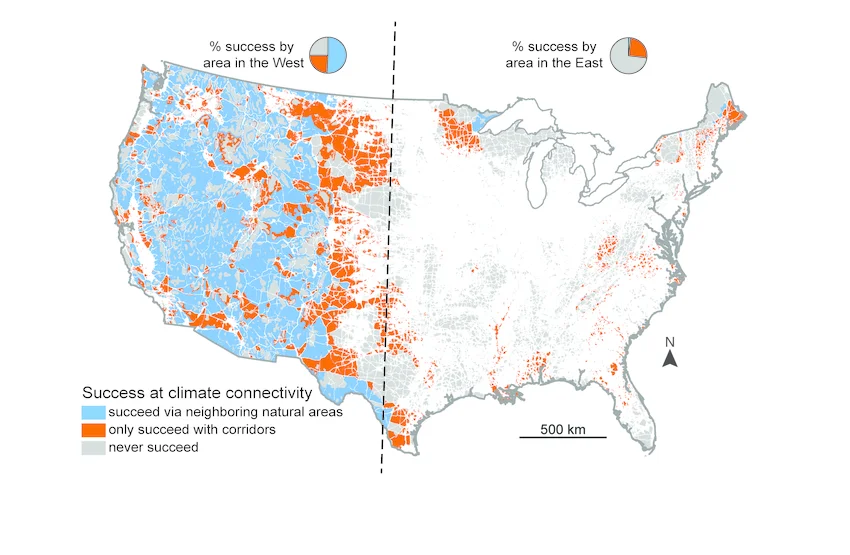
Maintenance Tips for Native Plant Gardens
Contrary to popular belief, native gardens aren’t maintenance-free—but they do require significantly less work than traditional gardens.
1. Watering
After the first year, most native plants need little supplemental watering. Monitor during extreme droughts.
2. Weeding
Weed regularly in the first two years. As the plants mature and fill in, weeding becomes less of an issue.
3. Pruning and Deadheading
Some plants benefit from deadheading to promote bloom or pruning in early spring to control size
4. Mulching
Reapply mulch annually to help suppress weeds and retain moisture.
5. Avoid Fertilizers
Most native plants thrive in low-nutrient soils. Fertilizers can cause excessive growth and reduce flowering.
Challenges of Native Plant Landscaping (And How to Overcome Them)
While the benefits are numerous, native plant landscaping comes with a few challenges. Here’s how to handle them:
1. Plant Availability
Some native species can be hard to find. Look for local nurseries or native plant sales hosted by conservation groups.
2. Misconceptions About Appearance
People often associate native gardens with messy or weedy aesthetics. Educate neighbors and use signs that explain the purpose of your native garden.
3. Invasive Species
Aggressive non-native weeds can outcompete your native plants. Stay vigilant and remove them early
.4. HOAs and Local Ordinances
If you live in a neighborhood with a homeowners association, review landscaping rules before you begin. Many areas are becoming more accepting of eco-friendly practices.
The Future of Sustainable Landscaping
As climate change and biodiversity loss continue to impact ecosystems worldwide, native plant landscaping is no longer just a trend—it’s a necessity. Governments, municipalities, and private homeowners are recognizing the value of restoring native habitats, one garden at a time.
Community Involvement
- Join a local native plant society.
- Volunteer in community gardens.
- Share your garden’s success on social media to inspire others.
Final Thoughts
Native plant landscaping empowers homeowners to make environmentally responsible choices while enjoying a beautiful, low-maintenance yard. By working with nature instead of against it, we can preserve regional biodiversity, reduce our ecological footprint, and reconnect with the land around us.
Start small—even replacing a patch of lawn with native wildflowers can make a significant difference. And remember: every native garden contributes to a healthier planet.
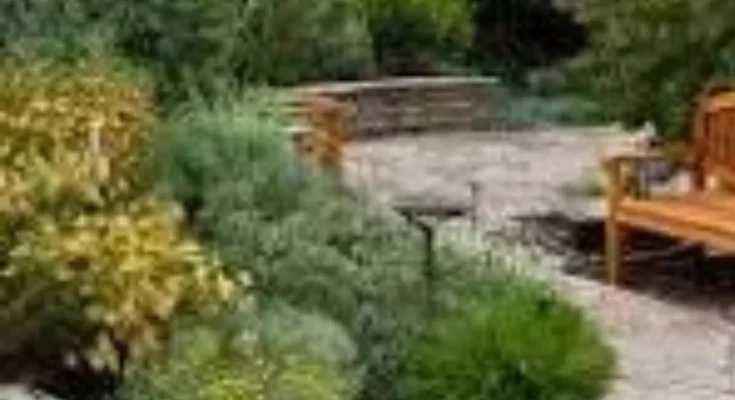
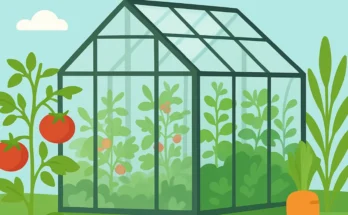

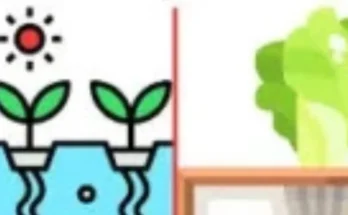
Желаете сделать приятный сюрприз?
доставка цветов – отличная статья на эту тему.
Это сервис, которому доверяют ярких эмоций.
Рекомендуем узнать о том, как быстро оформить заказ.
Доставка осуществляется по Москве и области, а композиции радуют глаз.
Не упустите шанс подарить радость просто и удобно!
ремонт телевизоров тошиба ремонт телевизора toshiba – профессиональный ремонт с гарантией качества.
ремонт жк телевизоров шарп ремонт тв sharp
sharp телевизор сервисный центр sharp-remont-moskva.ru
Забронировать отель в сервисе бронирования отелей можно быстро и удобно. Новые технологии дают возможность быстро найти и забронировать нужный отель.
Забронировать отель в сервисе бронирования отелей
Подбор отеля играет значительную роль в организации вашей поездки. Необходимо учитывать расположение, услуги и отзывы других путешественников.
Важно внимательно изучить правила и условия, связанные с бронированием отеля. Могут быть разные условия отмены брони, предоплаты и минимального времени проживания.
Наконец, не забудьте подтвердить свою бронь и сохранить все необходимые данные. Внимание к деталям поможет избежать неприятных ситуаций при заселении.
Купить новогодние украшения для дома в Москве легко через интернет магазин. Такой способ оформления дома создает уникальную атмосферу праздника.
Новогодние украшения для дома интернет магазин
В онлайн-магазинах имеется большой выбор новогодних аксессуаров, от стильных гирлянд до винтажных игрушек. Вы сможете с легкостью подобрать украшения, соответствующие вашему стилю.
Онлайн-магазины часто проводят распродажи, на которых можно приобрести новогодние украшения по более низким ценам. Так вы сможете сэкономить средства, приобретая желаемые украшения.
Наличие доставки делает покупки в интернет-магазине особенно удобными. Вы можете заказать любимые украшения, не тратя времени на поездки по магазинам.
CreatBot D600 Pro 2 Industrial 3D Printer is a cutting-edge industrial 3D printer designed for businesses demanding accuracy, dependability, and versatility in 3D printing devices. As part of the D600 lineup, it incorporates a spacious build volume, advanced dual extrusion technology, and high-performance features suitable for industrial-scale applications and complex materials.
CreatBot D600 Series Overview
The CreatBot D600 Series and D600 Pro establish benchmarks for large-scale 3D printers solutions. With a printing area of 600 ? 600 ? 600 mm, these professional large format 3D printers cater to a wide range of industrial 3D printing demands, from big model prototyping to end-use production. The D600 pro series and the latest D600 Pro2 HS introduce further enhancements in performance and material compatibility.
Key Features and Advantages
Industrial-Grade Large Build Volume
Build size: 600 ? 600 ? 600 mm
Ideal for large format 3D printing projects and industrial 3D printing
Supports technical materials and complex prototypes
Dual Extrusion and High-Heat Printing
4th generation 1.75mm dual extruders and hotends for multi-material printing
Right and left extruder design for flexible printing
Supports high performance 3D materials, including PLA, nylon, carbon-fiber, and more
Maximum extruder temperature: up to 420°C (high-heat)
Heated build chamber for premium applications
Precision, Speed and Reliability
Professional 3D print quality with accurate layer resolution
Advanced motion system for fast printing and robust performance
Consistent printing speed up to 120 mm/s
Reliable operation for continuous industrial use
Compatible Materials and Filaments
Wide Filament Compatibility
Works with a broad spectrum of filament: PLA, ABS, PC, PETG, PVA, nylon filament, carbon fiber, and more
Designed for technical materials and functional prototyping
Advanced dual extruder 3d printer enables multi-material and soluble support printing
Applications: From Prototyping to Production
The CreatBot D600 Pro 2 and D600 Pro 3D printer serve a diverse set of applications:
Rapid prototyping and large format 3D print models
Functional parts for automotive, aerospace, and engineering
Tooling, jigs, and fixtures for industrial production
Art, architecture, and creative projects requiring large industrial 3D printing
Technical Specifications
Models: CreatBot D600 Pro 2, D600 Pro, D600
Build size: 600 ? 600 ? 600 mm
Extruders: Dual extruder, 4th generation 1.75mm dual extruders and hotends
Max nozzle temperature: 420°C
Bed temperature: up to 100°C
Filament diameter: 1.75 mm
Layer height: 0.05 – 0.3 mm
Supported materials: PLA, ABS, PC, PETG, PVA, nylon, carbon fiber, engineering-grade materials
Printing speed: up to 120 mm/s
Enclosure: Heated, for improved material properties
Interface: Touchscreen interface
Supported file types: STL, OBJ, AMF
Comparing D600 Models
Feature Differences
D600 model: Entry-level industrial large scale 3d printer for basic applications
D600 Pro model: Enhanced with heated chamber, auto bed leveling, and wider material support
D600 Pro 2 model (pro version): Adds higher printing speed, improved reliability, and HS (high speed) configuration
Other CreatBot Models
CreatBot D1000 for even larger build volumes
CreatBot 3D printer includes industrial and professional 3d printer solutions
FAQ
Compatible Materials for CreatBot D600 Pro 2
The CreatBot D600 Pro 2 is compatible with a wide range of filament including PLA, ABS, PETG, PC, nylon filament, carbon-fiber, and other engineering-grade materials.
Maximum Build Volume of D600 Pro 2
The build volume is 600 ? 600 ? 600 mm, supporting large-scale and industrial 3d printing needs.
Dual Extruder and High-Temp Support on D600 Pro 2
Yes, it is equipped with dual extruder technology and reaches up to 420°C for high-temperature printing.
What differentiates the D600 Pro 2 from the D600 Pro?
The D600 Pro 2 offers higher print speed, improved reliability, and the new HS (high speed) option.
Summary
The CreatBot D600 Pro 2 and the CreatBot D600 Pro industrial professional set the benchmark in the industrial 3D printer category. With exceptional build volume, robust dual extrusion system, compatibility with technical materials, and top performance across applications, they empower businesses and engineers to achieve new heights in industrial 3d printing.
industrial 3d
d1000
dual extruders and hotends
dual extruder
Searching for natural dreadlocks for sale?
Discover the finest natural dreadlocks at natural dreadlocks, your leading store for natural dreadlocks extensions online.
Our selection of natural locs offers handcrafted extensions made from 100% human hair, ensuring a flawless blend for every hair type. Whether you want natural grey dreadlocks or customized natural dreadlocks hair, we have the perfect set.
Why choose our natural dreadlock extensions?
– 100% human hair for durability and realism.
– Expertly crafted by skilled artisans to blend seamlessly.
– Available in a wide range of colors, including earthy hues.
– Suitable for easy maintenance
– Fast US shipping with reliable service.
Shop natural dreads that look and feel natural. Our natural dreadlocks extensions are ideal for anyone looking to enhance their look without compromising authenticity.
Explore the best natural dread products and take your hairstyle to the next level with beautiful natural locs for sale. Whether you are seasoned in natural hair styles, we provide products that celebrate your unique identity.
Order now from Ready to find authentic natural locs?
Discover the top-quality natural dread hair at natural dreadlocks extensions, your trusted source for dreads natural hair online.
Our collection of dreadlocks natural hair offers premium-quality dreads made from 100% human hair, ensuring a flawless blend for every hair type. Whether you want natural grey dreadlocks or customized natural dreadlocks hair, we have the perfect set.
Why choose our natural dreadlock extensions?
– Real human hair for lasting beauty and natural feel.
– Expertly crafted by skilled artisans to match your natural hair.
– Available in various lengths and shades, including earthy hues.
– Suitable for easy maintenance
– Fast US shipping with tracking and support.
Shop natural dreads that look and feel natural. Our natural dreadlocks extensions are ideal for anyone looking to enhance their look without compromising authenticity.
Explore the finest natural dreadlocks collection and take your hairstyle to the next level with beautiful natural locs for sale. Whether you are seasoned in natural hair styles, we provide quality, style, and expert guidance.
Order now from — where natural dread hair meets artistry. — where natural dread hair meets artistry.
Доставка тюльпанов — это прекрасный способ порадовать близких. Эти цветы символизируют весну и радость. Тюльпаны в качестве подарка — это всегда уместно и приятно.
Закажите цветы тюльпаны и радуйте своих близких свежими цветами!
Разнообразие тюльпанов поражает воображение. Каждый сорт имеет свою уникальную красоту и характер. Подобрать букет тюльпанов для любого праздника легко благодаря разнообразию сортов.
Услуга онлайн-доставки тюльпанов становится все более популярной. Это удобно и быстро, особенно в праздничные дни. Существует множество платформ, где можно заказать тюльпаны с доставкой.
Гарантированная доставка тюльпанов в срок — это залог положительных эмоций. Заказав доставку в нужный момент, вы сделаете свой подарок особенным. Не забывайте также о возможности выбора оформления букета.
Гелиевые шарики — замечательное решение для оформления праздника. Такие шарики придают особую атмосферу и радость любому торжеству.
Шарики с гелием купить для вашего праздника!
Выбор гелиевых шариков очень разнообразен. Вы можете выбрать шарики с рисунком или однотонные, в зависимости от темы вашего события.
Шарики с гелием доступны как в офлайн-магазинах, так и в интернет-магазинах. Онлайн-покупка часто бывает более удобной и быстрой.
Важно учитывать меры безопасности при работе с гелиевым наполнителем. Убедитесь, что шарики не попадают в воду и не оставляются без присмотра.
Букеты из тюльпанов на 8 марта — это идеальный способ выразить свои чувства и сделать этот день незабываемым. Сколько стоят тюльпаны на 8 марта.
Тюльпановые букеты к 8 марта — это отличный способ выразить свою любовь и уважение к женщинам. Этот небольшой, но значимый акцент сделает ваш подарок поистине незабываемым.
обслуживание бойлера обслуживание бойлера .
В Москве можно приобрести свадебный букет для невесты по доступной цене. Свадебный букет является важной частью образа невесты, и его выбор требует особого внимания.
Свадебный букет для невесты купить в Москве недорого.
Даже при скромном бюджете найдется масса красивых букетов, которые будут выглядеть стильно. Среди большого количества флористических компаний в Москве можно найти множество интересных предложений.
Необходимо обратить внимание на стиль мероприятия и личные предпочтения невесты при выборе букета. Цвета, форма и размер букета должны гармонировать с образом невесты.
Работая с флористом, невеста может обсудить все нюансы и получить идеальный букет для своего важного дня. Обязательно заказывайте букет заранее, чтобы не сталкиваться с проблемами в день свадьбы.
Пионы купить в Москве букет с доставкой на дом недорого
Эти цветы отлично смотрятся в различных букета и композициях, добавляя изысканности и шарма в любой праздник.